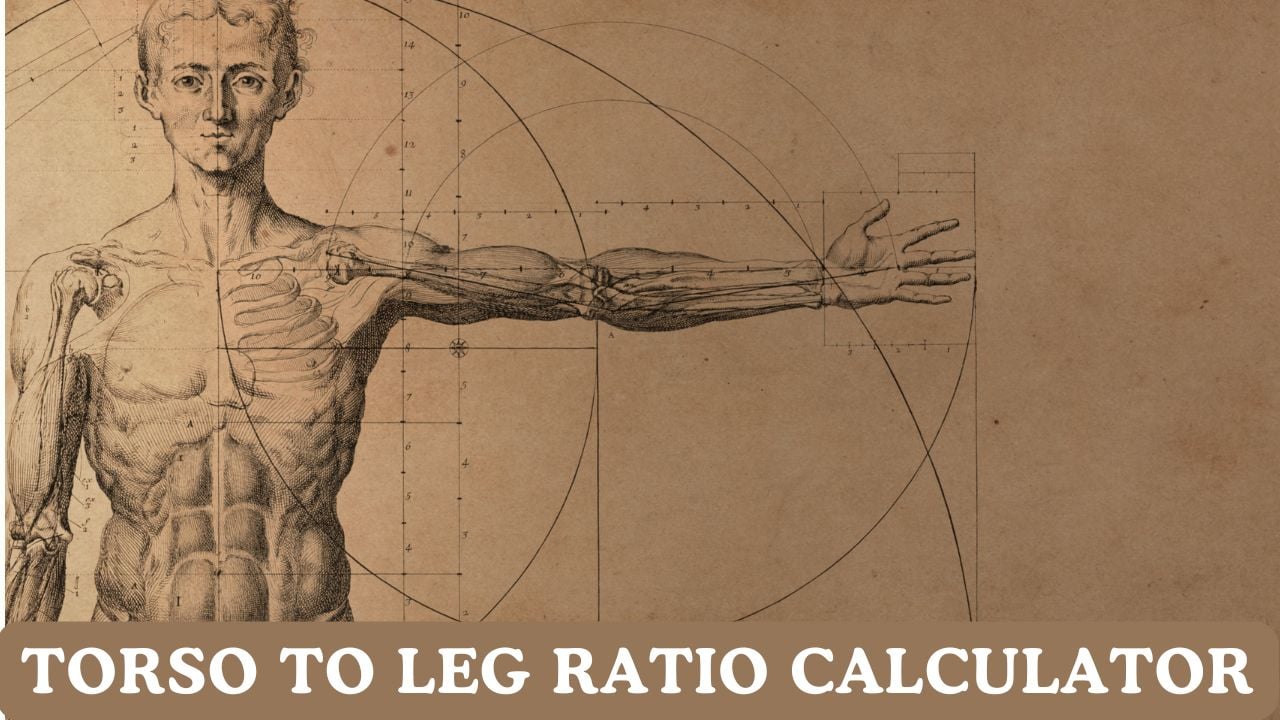🦺 Torso to Leg Ratio Calculator
Analyze your upper to lower body proportions and how they impact health, performance, and body composition

What is Torso to Leg Ratio
Torso to Leg Ratio (TLR) measures the proportion between your upper body (torso) length and lower body (leg) length. This important body composition metric is calculated by dividing your torso length by your leg length. Research shows that optimal TLR typically ranges from 0.465-0.505 for most adults, with slight variations between genders.
Why TLR Matters: Your torso-to-leg ratio affects posture, athletic performance, injury risk, and overall biomechanics. Understanding your body proportions helps optimize training programs, clothing choices, and health strategies for your unique body type.
📐 TLR Calculation Formula & Methods
📊 TLR Standards by Gender & Activity
| Category | Male TLR Range | Female TLR Range | Optimal Range | Performance Impact |
|---|---|---|---|---|
| General Population | 0.470-0.500 | 0.465-0.495 | 0.485 ± 0.020 | Balanced biomechanics |
| Endurance Athletes | 0.460-0.485 | 0.455-0.480 | Lower ratios favored | Running efficiency |
| Strength Athletes | 0.485-0.520 | 0.480-0.515 | Higher ratios favored | Lifting leverage |
| Swimmers | 0.475-0.495 | 0.470-0.490 | Balanced proportions | Stroke efficiency |
Note: These ranges represent optimal proportions for different activities. Individual performance depends on many factors beyond body proportions alone.
🏃♂️ Athletic Performance & TLR Impact
Endurance Sports Advantages
Lower TLR (Longer Legs): Athletes with relatively longer legs often excel in distance running, cycling, and other endurance activities. The longer stride length and improved leverage can enhance efficiency and reduce energy expenditure over long distances.
Training Focus: Leg strengthening exercises combined with core stability training can maximize the natural advantages of longer-legged body types in endurance sports.
Strength Sports Benefits
Higher TLR (Longer Torso): Athletes with proportionally longer torsos often have advantages in weightlifting, powerlifting, and strength-based activities. The shorter limb length provides better leverage for lifting heavy weights and improved mechanical advantage.
Training Approach: Upper body strength training can capitalize on the natural torso advantages, while maintaining mobility and flexibility prevents potential limitations from shorter limb proportions.
🩺 Health Implications of Body Proportions
Posture & Spinal Health
TLR and Posture: Your torso-to-leg ratio significantly impacts natural posture and spinal alignment. Individuals with longer torsos may be more prone to back issues and need focused attention on lower back strengthening and postural awareness.
Prevention Strategies: Regular stretching, core strengthening, and ergonomic considerations become crucial for maintaining spinal health regardless of your specific body proportions. Understanding your TLR helps tailor preventive exercises to your body type.
Injury Risk & Prevention
Sport-Specific Risks: Different TLR ratios may predispose athletes to specific injury patterns. Longer-legged athletes might face different knee and hip stress patterns compared to those with longer torsos, who may experience more back-related issues.
Personalized Prevention: Proper recovery protocols and targeted strengthening programs should account for your individual body proportions to minimize injury risk and optimize performance.
🎯 Optimizing Training for Your TLR
Training Modifications by Body Type
Lower TLR Training: Focus on upper body development to create visual balance, emphasize hip mobility and glute strength to support longer legs, and prioritize running-specific training to maximize natural advantages in endurance activities.
Higher TLR Training: Emphasize leg development through comprehensive leg workouts, focus on spinal mobility and core strength, and consider strength-based activities that capitalize on natural leverage advantages.
Exercise Selection Strategies
Movement Patterns: Choose exercises that complement your body proportions. Longer-torso individuals may benefit from deadlift variations, while longer-legged athletes might excel with squat patterns and plyometric movements.
Balanced Development: Regardless of natural proportions, comprehensive strength training ensures balanced development and reduces compensation patterns that can lead to injury or inefficiency.
📝 Measurement Best Practices
🎯 Accurate Measurement Techniques
Timing: Take measurements at the same time of day, preferably morning,
when your spine is at its longest. Body measurements can vary throughout the day.
Positioning: Stand straight against a wall with minimal clothing.
Keep shoulders relaxed and ensure the measuring tape is level and snug but not tight.
Consistency: Use the same measurement technique each time for tracking
changes. Have the same person take measurements when possible for better consistency.
📊 Understanding Your Results
Normal Variation: TLR can vary 2-3% based on measurement technique and
body position. Focus on overall trends rather than small measurement differences.
Individual Factors: Genetics, age, and training history all influence
body proportions. Use TLR as one factor among many in your fitness planning.
Measurement Validation: If your measurements result in extreme ratios (torso >35% or <25% of height),
double-check your measurement technique and anatomical landmarks.
Practical Application: Apply TLR insights to training selection,
sport choice, and injury prevention rather than trying to change your natural proportions.
⚕️ Medical Disclaimer
This Torso to Leg Ratio calculator provides estimates based on anthropometric research and should not replace professional medical advice. Body proportions vary significantly among individuals due to genetics, ethnicity, age, and health factors. The calculations and assessments provided are for educational and informational purposes only. Consult with healthcare professionals, certified fitness trainers, or qualified sports scientists for comprehensive body composition analysis. Do not use these measurements for medical diagnosis or to determine health status. Focus on overall wellness, proper training techniques, and healthy lifestyle choices rather than specific body measurements.
